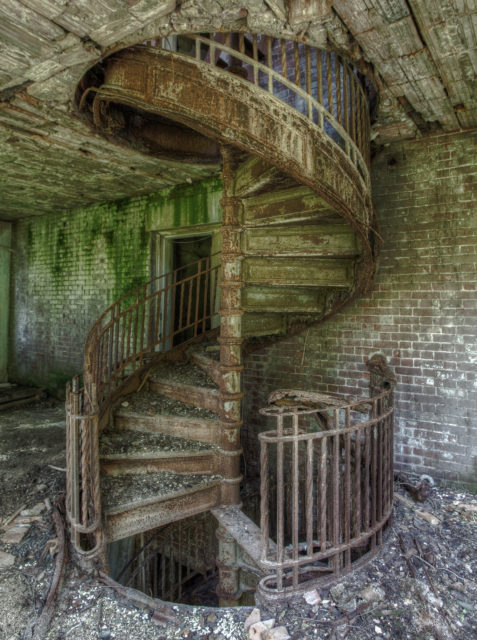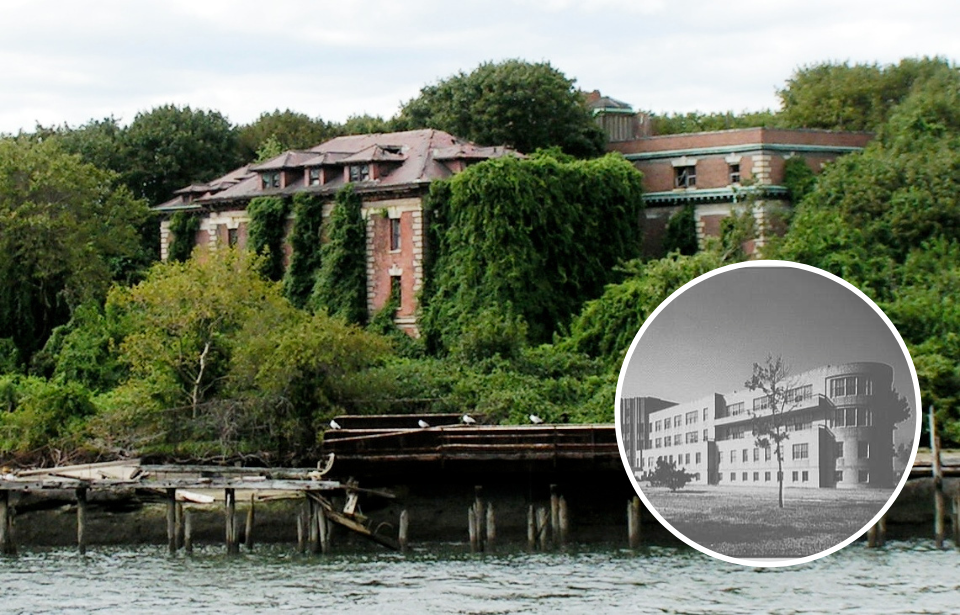Located less than a mile off the city of Manhattan are two islands owned by the city of New York. The larger of them, long abandoned and uninhabited, is called North Brother Island. The 22-acre plot was occupied until 1963 and was home to infectious diseases patients, but now it houses one of the area’s largest nesting colonies of black-crowned night herons. These and other birds are some of the island’s only visitors anymore.
Entering the island


Entry to the island is largely prohibited and can only be done with approval from the city and while accompanied by a representative of New York’s Department of Parks and Recreation. The lone way to get to the island is by boat, and the ferry dock sits rusty and largely non-operational, as visitors are few and far to come by.
North Brother Island is situated between the South Bronx’s industrial coast and Rikers Island Correctional Center. The East River that surrounds it is littered with patrolling police boats.
Riverside Hospital

In 1885 the city built the Riverside Hospital, which would exclusively treat patients with infectious diseases. These maladies included typhoid fever, tuberculosis, yellow fever, and smallpox.

Riverside Hospital remained operational until WWII, but was then converted into a housing building for veterans, and later repurposed into a treatment and rehabilitation facility for people with heroin and other drug addictions. The facility continued to treat people until 1963 when it finally closed its doors, leaving North Brother Island completely abandoned.
The hospital that housed ‘Typhoid Mary’ Mallon

While still in service, Riverside Hospital famously housed Mary Mallon, better known as the patient “Typhoid Mary,” who was the US’s first documented asymptomatic carrier of the bacteria that causes typhoid fever. She was first quarantined in 1907 after an outbreak occurred in seven of the eight houses where she was employed as a cook. She was later released in 1910 under the condition that she not return to work as a cook.

As Mallon showed no symptoms, she refused to believe she was a carrier of typhoid fever and immediately returned to work as a cook after her release. This caused yet another outbreak of typhoid fever, and she was forced to quarantine a second time at Riverside Hospital in 1915.

Mallon remained in quarantine on North Brother Island for the rest of her life. She was given a private cottage where she lived until a stroke in 1932 sent her to Riverside Hospital. Mary Mallon died of pneumonia in 1938, at age 69. Before her death, she had infected at least 51 people with typhoid fever despite herself being in perfect health.
The General Slocum disaster

In June 1905, General Slocum, the “largest and most splendid excursion steamer in New York,” was transporting a group of mainly women and children from the St. Mark’s Evangelical Lutheran Church for their end-of-school outing. Alongside them were other passengers and crew, totaling about 1,350 people aboard. At 10 o’clock that morning, General Slocum took off for a picnic area on Long Island’s North Shore.

Not long after departing, a fire broke out on the lower deck of the steamer, and the crew was unable to tame it. The captain, William Van Schaick, was made aware of the fire and charged the boat for North Brother Island, but the flames quickly engulfed the entire steamship. Passengers either burned to death in the flames or threw themselves overboard without knowing how to swim. Many of those who did know how to swim were dragged down by the heavy clothing worn at the time.

More from us: From Riches to Ruins: New York’s Haunted Bannerman Castle
Staff at Riverside Hospital saw the disaster and ran to the shore to help. Van Schaick was able to ground General Slocum sideways about 25 feet from the island’s shore. Rescuers swam in and pulled survivors ashore but only around 300 passengers were saved. Many who perished in the disaster washed up on the shore of North Brother Island for days afterward. It was the worst maritime disaster in New York City’s history and the story has been retold in many books, movies, and plays.
